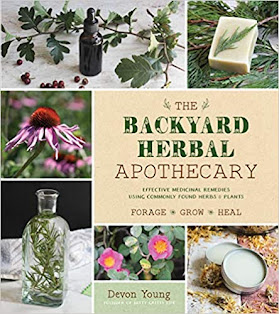
Plants of the Pacific Northwest Coast
by Pojar and Mackinnon
If you happen to be a minimalist who lives in the Pacific Northwest and insists on only having a single plant book in your house, this is the field guide to choose.But it's blasphemous to only have one field guide, so don't do that. Instead of focusing on plants within a certain state (a political boundary), this book focuses on plants within a certain bioregion. So if you don't live west of the Cascades, you'll probably want a different book. But if you do, Plants of the Pacific Northwest Coast is thoroughly researched, accessibly written, and contains ethnobotanical notes on most plants (which is not particularly common in field guides). The book is well-organized, with color coded categories further separated into families of plants and an index that contains both common and scientific names.
I first was introduced to this book while doing habitat restoration for the Washington Conservation Corps, which is a fancy way of saying I was employed to clip blackberries for 40 hours a week. Our crew affectionately referred to this book as Pojar, after the authors name that appears on the cover. Whenever we came across a plant that we didn't recognize, someone would call out for the Pojar and we'd gather around for a reading, kind of like church.
So get yourself a Pojar - it's the best field guide I've found.
https://www.villagebooks.com/book/9781772130089

The Backyard Herbal Apothecary: Effective Medicinal Remedies Using Commonly Found Herbs and Plants
by Devon Young
Are you interested in herbalism, wildcrafting, or growing native plants in your garden? This book is a delightful combination of beautiful photos, interesting plant descriptions that include growing and wild-harvesting information, and recipes for simple herbal preparations like teas, salves, soaps, tinctures, and more. I mean, who wouldn't want to make Cottonwood Salve for Achy, Angry Joints or Calendula Pit Paste for the Sweetest Underarms? The author lays out easy to understand instructions for herbal preparations, making this book a good place to start if you are new to herbalism, and the book has inspiring recipes that make you want to fill your garden with medicinal plants. I also love that she includes some recipes for using invasive species such as Japanese Knotweed, St. John's Wort, and Blue Flag Iris, giving people a creative use for something that might otherwise be seen as a useless pest. This is my new favorite book for herbal inspiration.
Ethnobotany of Western Washington: The Knowledge and Use of Indigenous Plants by Native Americans
by Erna Gunther
The single most useful book I've found for researching the ethnobotanical uses of plants in Western Washington is one published first in 1945 by Erna Gunther, an anthropology professor at the University of Washington beginning in 1921. The thoroughness of her research makes this an enduring work. She writes that where possible both a man and a woman from the same culture were interviewed: "women knew the food and medicinal plants and were more likely to give information on charms and potions; men knew the materials in nets, fishing gear, and woodworking." I recommend you use this book in conjunction with other field guides because this one contains no pictures in the body of the text and no plant descriptions. But if you can locate a plants scientific name, this book contains some of the most specific information on ethnobotanical uses of plants in the PNW.Northwest Trees
by Stephen F. Arno and Ramona P. Hammerly
This book is unsurpassed in the quality of its writing and the beauty of its illustrations. If you want to learn about trees in the Greater Northwest, this is the book for you. Stephen Arno conveys the character, ecological role, and ethnobotany of our native trees with easy-going prose that delves deeper than your average field guide. And even without his wonderful writing, the book is worth it for the illustrations of Ramona Hammerly alone. If you live in Washington, Oregon, Idaho, Montana, or British Columbia, I know of no better introduction to your native trees than this book. It's exquisite.
Botany in a Day
by Thomas J. Elpel
If you are feeling overwhelmed about where to start when it comes to recognizing different plants, Botany in a Day is an excellent resource. In this book, Thomas Elpel teaches you how to recognize the patterns of different plant families and make inferences about how these plants might be used. Instead of memorizing hundreds of plants, you learn to spot the characteristics of different families, which comes in handy if you're paging through a field guide with hundreds of photos of plants. Narrows things down a little and prevents you from pulling out your hair in frustration.


